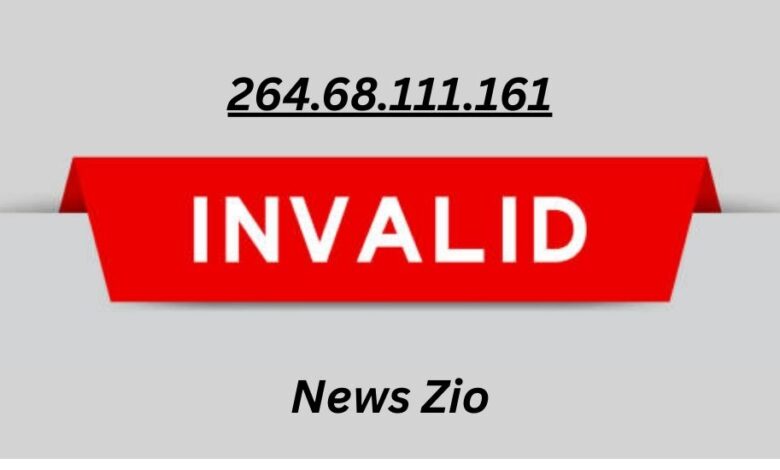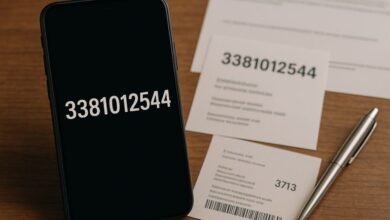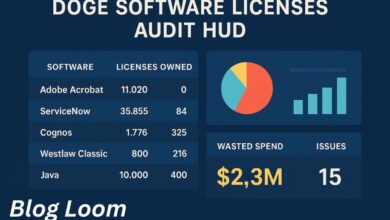264.68.111.161: Invalid IP Address Explained

The internet runs on numbers—literally. Every device connected to the global network is assigned a unique identifier known as an IP address. These addresses allow computers, servers, and mobile devices to locate one another and exchange data across the web. While most IP addresses look ordinary, sometimes a sequence appears in logs, articles, or technical discussions that raises eyebrows. One such case is “264.68.111.161.”
At first glance, it seems like a regular IPv4 address. However, closer inspection reveals something unusual: this string is not valid under IPv4 rules. Despite this, it has circulated on blogs and websites, often raising questions about what it represents, why it appears, and what risks it might pose to businesses and individuals.
In this article, we’ll take a deep dive into what 264.68.111.161 is, why it’s invalid, how such addresses come to appear, potential business risks, and lessons organizations can draw from these anomalies.
The Basics: How IPv4 Addresses Work
IPv4 (Internet Protocol version 4) is the most widely used addressing system on the internet. It uses a 32-bit number, represented in human-readable form as four decimal octets separated by dots—for example, 192.168.1.1.
Each octet can range between 0 and 255 because it represents 8 bits (2⁸ = 256 possible values). This means any number greater than 255 in an octet automatically disqualifies the string from being a valid IPv4 address.
So, when we look at 264.68.111.161:
-
The first octet is 264, which is outside the permissible range.
-
Therefore, this address is not routable on the public internet.
This single technical fact is what makes 264.68.111.161 “famous”—not because it connects to anything, but because it cannot connect to anything at all.
Why Invalid IPs Show Up
You might wonder: if an address like this cannot exist, why do we see it in logs, articles, or even corporate systems? There are several explanations.
1. Human Error
Mistyping an IP address is common, especially when manually configuring systems or copying numbers across spreadsheets and documentation. A slip of the keyboard—typing “264” instead of “64”—can create a phantom entry that later confuses IT teams.
2. Testing and Placeholder Data
Developers sometimes insert dummy values during development and testing phases. While they should ideally use reserved addresses (such as those in the 192.0.2.0/24 block set aside for documentation), invalid IPs sometimes creep into configuration files and logs when these test entries are not removed.
3. Malicious Obfuscation
Cybercriminals occasionally use malformed IP addresses to confuse intrusion detection systems or to mask malicious activity. By inserting invalid values, they may attempt to break log parsers or evade simplistic filters.
4. Legacy or Buggy Software
Older systems or poorly written applications may fail to validate input properly. They might accept “264.68.111.161” as an IP string even though it’s invalid, causing data corruption or communication failures downstream.
Business Impacts of Invalid IP Entries
At first, an invalid IP might seem like a harmless quirk. But in business environments, such anomalies can trigger significant issues.
1. Downtime and Service Interruptions
If a system tries to connect to 264.68.111.161, the connection will inevitably fail. If this invalid address is embedded in configuration files, it may break service dependencies—causing applications to crash or communications to stall.
2. Email and Communication Failures
Misconfigured mail servers, CRM platforms, or networking tools could attempt to send data to invalid addresses. This results in lost messages, failed notifications, or broken workflows, all of which carry business costs.
3. Troubleshooting Costs
Every minute IT staff spend investigating a phantom IP is time and money lost. What looks like a “critical connection issue” could, after hours of work, turn out to be nothing more than a typo.
4. Security Risks
If invalid addresses are deliberately introduced by attackers, they can disrupt monitoring systems or introduce vulnerabilities by exploiting poorly written validation routines.
5. Financial Impact
Business Pro Planner, in its analysis of 264.68.111.161, points out that downtime and misconfigurations can lead to substantial financial losses, from direct costs like system outages to indirect costs like reputational harm.
Real-World Example: Business Pro Planner’s Analysis
One notable exploration of this mysterious IP came from Business Pro Planner, which published an article titled “264.68.111.161 Could Break Your Business – Here’s How.”
Key takeaways from their analysis:
-
Cause: The invalid IP likely appears due to human error, buggy software, or malicious insertion.
-
Impact: Businesses can suffer downtime, message failures, and operational disruptions.
-
Prevention: Enforce IP validation checks, run network audits, use monitoring tools, and train staff to recognize anomalies.
This shows that what might look like a trivial invalid number can carry serious implications for businesses.
How to Handle Encounters with Invalid IPs
If your organization encounters 264.68.111.161 or similar invalid IP addresses in logs, here’s how to respond.
Step 1: Confirm Invalidity
Use an IP validation tool or script to confirm that the address is invalid. This prevents wasted effort chasing phantom connections.
Step 2: Check Configuration Files
Search through server, database, and application configs for the entry. If found, correct the mistake immediately and redeploy with valid addresses.
Step 3: Audit Logs
If the IP shows up repeatedly, determine whether it was user input, test data, or malicious activity. Document the findings for future reference.
Step 4: Isolate Systems if Needed
In cases where malicious intent is suspected, isolate affected machines and run forensic checks to rule out intrusion attempts.
Step 5: Prevent Recurrence
-
Use automated validators for IP input.
-
Train staff on proper IP handling.
-
Leverage monitoring and alerting tools that flag invalid entries immediately.
Broader Lessons for Networking and Security
The 264.68.111.161 case illustrates several broader truths about digital infrastructure:
-
Validation Matters: Always sanitize and validate inputs, whether they are user emails, database entries, or IP addresses.
-
Documentation Best Practices: Use reserved documentation addresses for examples—never random invalid numbers.
-
Security by Design: Assume malformed data could be malicious and prepare systems to handle it gracefully.
-
Training Pays Off: Human error is inevitable, but consistent training and clear processes reduce its likelihood.
-
Monitoring Saves Costs: Automated systems that catch anomalies early prevent costly downtime.
The Psychology of “Phantom IPs”
There’s also an interesting human factor at play. People are naturally curious about anomalies, and when they see a “weird” IP in their logs, they often search it online. This curiosity explains why so many blogs and forums have articles about 264.68.111.161.
It also illustrates the power of numbers in digital culture. Even when an IP is invalid, the fact that it looks like it could be real makes it intriguing enough to spark widespread discussion.
Conclusion
The case of 264.68.111.161 highlights an important lesson: not every string that looks like an IP address is valid. Small anomalies in technical environments can create outsized impacts when ignored.
Whether the result of human error, buggy software, or deliberate tampering, invalid IPs remind us of the need for vigilance, validation, and training. For businesses, catching these issues early can mean the difference between seamless operations and costly disruptions.
As the internet continues to expand, and as we shift toward IPv6 with its more complex addressing scheme, these lessons remain timeless: always validate, always monitor, and never ignore anomalies.
This article is published in collaboration with Blog Loom, where we explore the fascinating quirks of technology, security, and digital infrastructure.
For more information visit Blog Loom .




